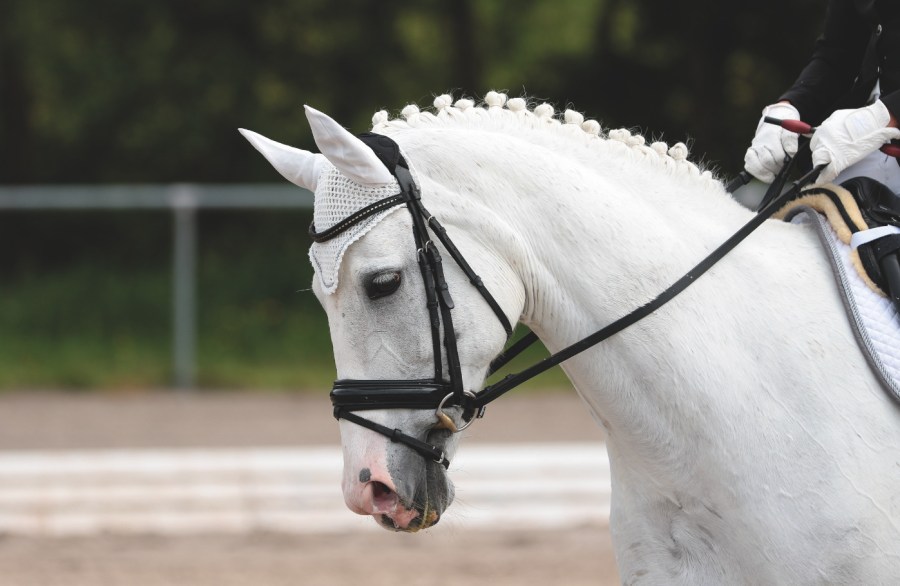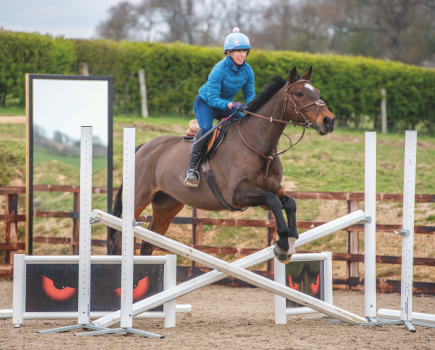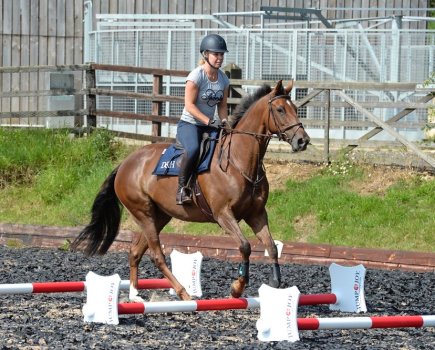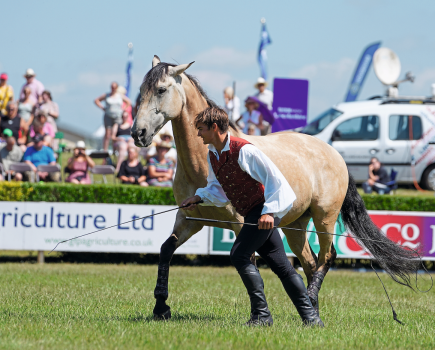Talented horses often come with a hot head, and achieving a calm, confident test is all in the training. Dressage rider and trainer Victoria Jones is here to help your horse achieve their full potential.
We’ve all come across them: those horses who possess bags of potential but struggle with the concept of calm, rational thought when asked to learn something new. We think we’re asking, quite reasonably, for a few steps of inside flexion or leg yield, but they confuse the aids and throw in the towel. Cue a downwards spiral as each schooling session becomes a battle of wills…
If this sounds familiar you’re far from alone, but what you need to do is change your mindset, reduce the pressure, and give you and your horse every chance of success, whatever level you’re aiming at.
“As a rider is can be hard to understand what’s going on with our horses, so we need to strip things back to basics,” says Victoria. “Often training problems stem from a balance issue, so you need to take the pressure off, allow your horse to relax, and start to build a better connection.
“It’s also important to remember that every horse is different and you need to find what works for yours, both mentally and physically.”
Keep calm and in control
The trick with training a horse who can struggle to keep a lid on things mentally and finds the process of learning new moves a challenge is to keep them as relaxed as possible. This means new moves can be introduced gradually, without any drama.
Tips for success:
- Keep everything calm and relaxed and always ensure your horse understands what’s being asked of them.
- Remember that most horses want to please and will feel more in control when they have a set routine that they feel confident working within.
- Strip things right back to basics if needs be. Very often problems stem back to a balance issue, and by taking the pressure off your horse can relax and stay supple.
- Don’t allow their mood to dictate what you do. Have a plan in mind of what you want to achieve in every session, but be realistic.
- Always be flexible in your approach. What works for one horse won’t necessarily work for another, so find a way of training that suits your horse and their quirks.
Warm up in style
The trick to effective training is an effective routine, stresses Victoria.
“I like to instil a warm up and training routine that both the horse and rider and comfortable with, and then add new layers once the basics are in place,” she says.
Tips for success:
- Horses, especially the hot heads, like to know what to expect, and feel more comfortable and secure when they know what’s going on.
- Given this, develop an effective warm-up plan that plays to their strengths. For example, if your horse struggles to stretch at the start of a schooling session because they’re too tense, stretch at the end instead.
- Appreciate that there’s a time to be routine and a time to add new things, and if your horse is naturally anxious it’s all about timing. Your warm up is a time for banal normality – any new steps or moves can be gently introduced once they’re feeling relaxed, supple and quieter in mind.
Get connected
If your horse baulks at the idea of learning something new because they don’t understand what you’re asking, it’s time to go back to basics. Victoria stresses that it’s vital you achieve the right connection so they learn to follow every movement through.
When a horse is hot headed it’s all too easy to feel as if they’re running away with you. As a result, you become strong in the hand when, in fact, what your horse really needs is for you to use your leg.
To help remedy this, keep things simple.
How to ride it:
- Once you’ve warmed up, go large in trot and aim for a nice basic rhythm.
- Introduce half 20m circles at each end of the arena, and concentrate on keeping that nice trot rhythm throughout, but don’t obsess about getting it spot on 100% of the time. Instead, keep running through a mental checklist so you can correct yourself if you feel things slipping.
- Now move on to trot-walk and walk-trot transitions, envisaging the pace you want to achieve a couple of strides before you ask for it.
- Practise using your voice so that you can make as light an aid as possible and keep your riding as gentle and calm as you can.
The next step: In trot, along the long side of the arena, ask for a tiny flex to the outside. Try to maintain the same trot, in the same balance, as you had before. Gently open your outside rein to give your horse a channel to work into while keeping a supportive elastic feel on your inside rein and holding your body straight.
Make it easy for them by asking for just a shallow bend, and do the same along the next long side, this time flexing slightly to the inside. If they find this easy, you can gradually increase the angle of the flex, but start small.
Introduce leg yield
Once your horse is happy to flex gently to the inside and outside in trot, introduce a few steps of leg yield.
“You just need to go when your horse is in balance and on your aids nicely,” advises Victoria.
How to ride it:
- Start by riding leg yield off the long side to the quarter line, before progressing to riding it to the centre line, and then all the way across to the three-quarter line.
- When you first introduce leg yield, think about building a connection from your leg to your hand, so you’re encouraging your horse to move from their back to their front. This will also help you not to fall into the trap of drawing back in your hand.
- Bear in mind that from your horse’s point of view, leg yield allows them to use all of their body in the correct way, and also meet and accept the contact (namely your hand) in a supple and relaxed way.
- Aim for just a few strides of leg yield to start with, then take the pressure off and go back to riding something your horse knows well, like a 20m circle.
Remember, hot horses will often worry, which leads to rushing, which leads to a fight… so always keep your riding calm. If you make a mistake, take your time, regain your balance, rhythm and composure, then ask for leg yield again once you feel ready.
Meet the expert: Rutland-based Victoria Jones runs Team Jones Equestrian with her eventer husband Richard. See teamjonesequestrian.com









